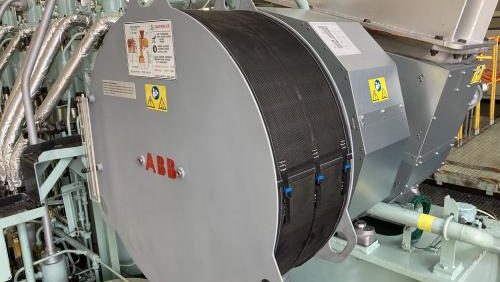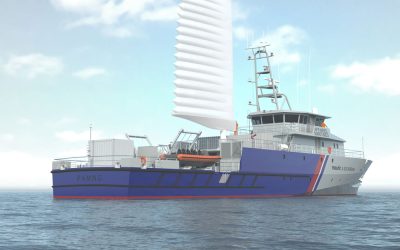ABB Turbocharging is better equipped than many to understand the challenges associated with decarbonised power generation, whether that’s onshore or at sea. But while there’s little certainty about what fuels and technologies will come to dominate, or even how successful they will prove in abating emissions, the Swiss company is confident that the internal combustion engine (ICE), and with that turbochargers, will continue to play a central role.
“There is no doubt that the ICE is here to stay, it has proven many times over the decades that it can burn all kinds of fuels and meet new requirements, and it will do so in the future,” declared Christoph Rofka, SVP for ABB Turbocharging, during a recent webinar.
The company believes there are three potential pathways for all industries: renewables, biomass and fossil fuels. Of these the cleanest and most efficient is renewable electricity, but it’s not an option for deep-sea shipping, where the energy equivalent of one litre of fuel currently requires 40kg of batteries. Likewise biomass, while being CO2 neutral, has limitations given the low volumes that can be produced and is more likely to serve as a transitional fuel.
Unsurprisingly, the company anticipates hydrogen will be at the heart of all future power generation. Realistically, like electrification, it is only viable for short-sea transportation. For fuelling larger vessels, where hydrogen’s low energy density makes it impractical, that will entail processing into ammonia, methanol or synthetic LNG.
ABB’s calculations suggest that enabling the fuel infrastructure for a 20,000TEU container, so that it could run on ammonia, would add an extra €100million to its construction cost for the onboard plant needed for the Haber-Bosch process. However, this figure is dwarfed by the €600 million that would be needed to build a 350MW onshore hydrogen power plant to generate the requisite 45,000toonnes of fuel that the vessel would require annually.
“I would say it will take decades to build sufficient renewable electricity to feed both the power generation and the shipping industry,” says Rofka. But he believes there is significant potential in adopting so-called ‘blue hydrogen’, where the gas is derived from fossil fuels but deploys additional carbon capture and storage technology, to develop those pathways before renewable sources are available. “Or even cleaner ‘turquoise’ hydrogen using pyrolysis, where carbon is captured in a solid state, making it easier to store than steam reforming. The solid carbon could even be used in the fertiliser industry,” he adds.
So, what could the choice of fuel mean for turbocharging technology? As part of an extensive research programme, ABB Turbocharging began by looking at the respective properties of the various clean fuel options. For controlled combustion two parameters are key: stoichiometric air mass describes how much air is required to achieve complete combustion of a quantity of fuel, while lower heating value (LHV) is the thermal energy released by burning a quantity of fuel.
This varies widely between different fuels, but the critical factor for determining turbocharger requirements is the air demand needed to release a specific amount of energy from a fuel, represented by dividing stoichiometric air mass by the LHV. When this is introduced the difference between the fuel options is greatly reduced. However, the combustion properties mean that very different engine concepts are needed, with various temperatures and pressures, necessitating different injection systems and aftertreatment for emissions.
For a fuel such as ammonia, there are two options for turbocharger optimisation. The lower temperature of exhaust gas creates potential to use less heat-resistant materials for the turbines. At the same time, ammonia’s high ignition temperature might be achieved by adjusting the compression of the cylinder and valve timings for more efficient combustion, something ABB has been exploring in simulations.
With hydrogen, at the opposite end of the combustion spectrum, the favoured concept is a lean-burn high-speed engine with spark ignition, rather than fuel injected at high pressure into compressed air as found in diesel engines. The twin challenges are to provide a comparable power outlet to diesel engines without dramatically altering the engine map, while also finding a turbocharger arrangement that allows for variable load. ABB says it has found atypical solutions (for high-speed engines) in the sequential operations of two-stage turbocharging systems.
In conclusion, the company is confident it’s possible to satisfy even more challenging applications of hydrogen with known turbocharger technologies and configurations.




